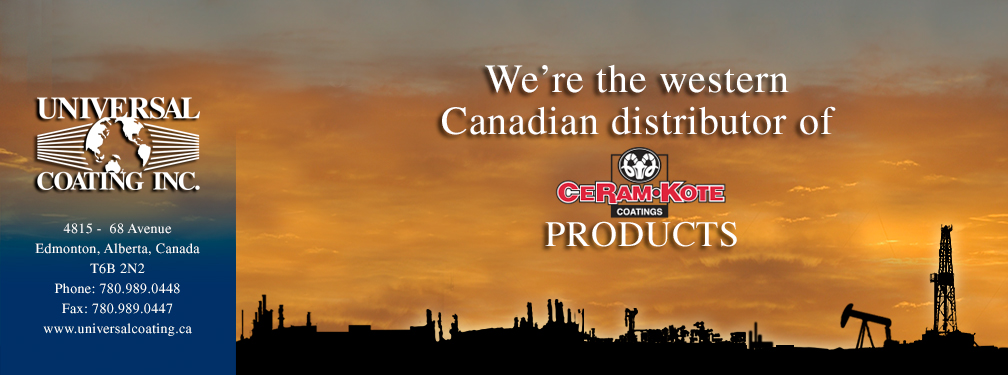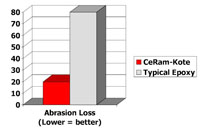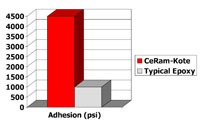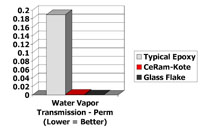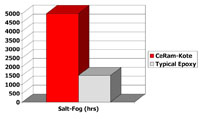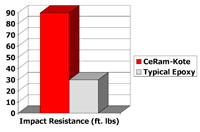3.0 Surface Preparation
All surfaces must be free of dirt, grease and oils prior to sand blasting or abrading. Alkali degreasers such as Devprep88, Klenzade Alkali degreaser or BP Comprox HD alkali degreasers should be used before abrasive blasting. They should not be permitted to dry on the substrate and should be rinsed from the substrate thoroughly with clean fresh water.
3.1 Steel, Stainless Steel, Titanium, Aluminum
Grit blast, with sand, steel, garnet, plastic or other media, etc., all metal material ideally to a NACE-1 (SSPC-SP5, Swedish-Sa 3) White Metal but no less than NACE-2 (SSPC-SP10, Swedish-Sa 2 1Ú2) Near White Metal finish. At all times, an anchor profile should be 2 to 2 1Ú2 mils (50 - 62.5 microns).
For stainless steel and aluminum, if necessary, blasting for profile may be done in the days prior to the application, but the surface must be additionally sweep or brush off blasted the day of the application to ensure all oxides have been removed and chlorides are at a minimum.
3.2 Fiberglass and composite materials
When preparing old or previously used fiberglass or plastic material, rough-up or abrade with sandpaper. For new fiberglass, clean and wipe all surfaces with Acetone, Isopropyl Alcohol (99% pure) or Methyl Ethyl Ketone (MEK) prior to profiling to remove mold release agents, wax and contamination prior to abrading. Fiberglass and composite materials must have a water content of less than 5%.
3.3 Galvanized
If the surface is newly galvanized (that is, less than 48 hours out of the zinc kettle), the surface can be coated after a slight roughening of the surface (i.e. 100 grit sandpaper or abrasive sweep blast*). If the surface of the galvanized part has been exposed to the environment for more than 1 year, the surface can be coated after the dirt, grease, oils, and salt contamination have been removed (i.e., either solvent wipe, alkaline wipe, etc.). The most difficult time to paint galvanized steel is between 1 day and 1 year after it has been galvanized. Freecom recommends sweep blasting* of the galvanized surface to remove the natural corrosion by-products of the galvanized surface {i.e. Zinc Oxide and Zinc Hydroxide)}.
*Care should be taken to prevent removing too much of the galvanized coating. Particle size for a sweep blast of galvanized steel should be between 200 and 500 mm.
3.4 Welds, joints, and edges.
All welds are to be ground reasonably smooth, removing all weld splatter and slag. Sharp edges in areas to be coated shall be ground to a minimum radius of 1/16Ó of an inch (1.5 mm).
3.5 Ultra-High Pressure Water Jetting.
All surfaces to be recoated shall be cleaned in accordance with NACE/SSPC WJ-1/SC-1 with UHP WJ of at least 30,000 psi (2,000 bar). Do not use corrosion inhibitors. Chloride removers should be used as a substitute. If in an enclosed area, dehumidification equipment should be used to ensure quick drying of the substrate. CeRam-Kote thin-film coatings should be applied as soon as possible to limit the amount of flash rusting that occurs. C Vis WJ-2 L and C Vis WJ-2 M are acceptable. C Vis WJ-2-H is not acceptable per SSPC-VIS 4(I) / NACE 7 visual standards. Once the rust is adhered and classified as corrosion of the substrate, then the rust is no longer acceptable.
**Prior to coating, all surfaces should be tested for chlorides. Ten (10) ppm of chlorides is the maximum level for internal or immersion service (internal vessels) and twenty (20) ppm is the maximum for external or atmospheric service (pipelines, external vessels). The acceptable level for hulls below the water line is <3 ppm. Any readings outside of the above-specified parameters will be treated with a soluble salt remover.
All surfaces must be free of contaminates. Freecom recommends checking all substrates for salt contamination prior to blasting and prior to coating.

